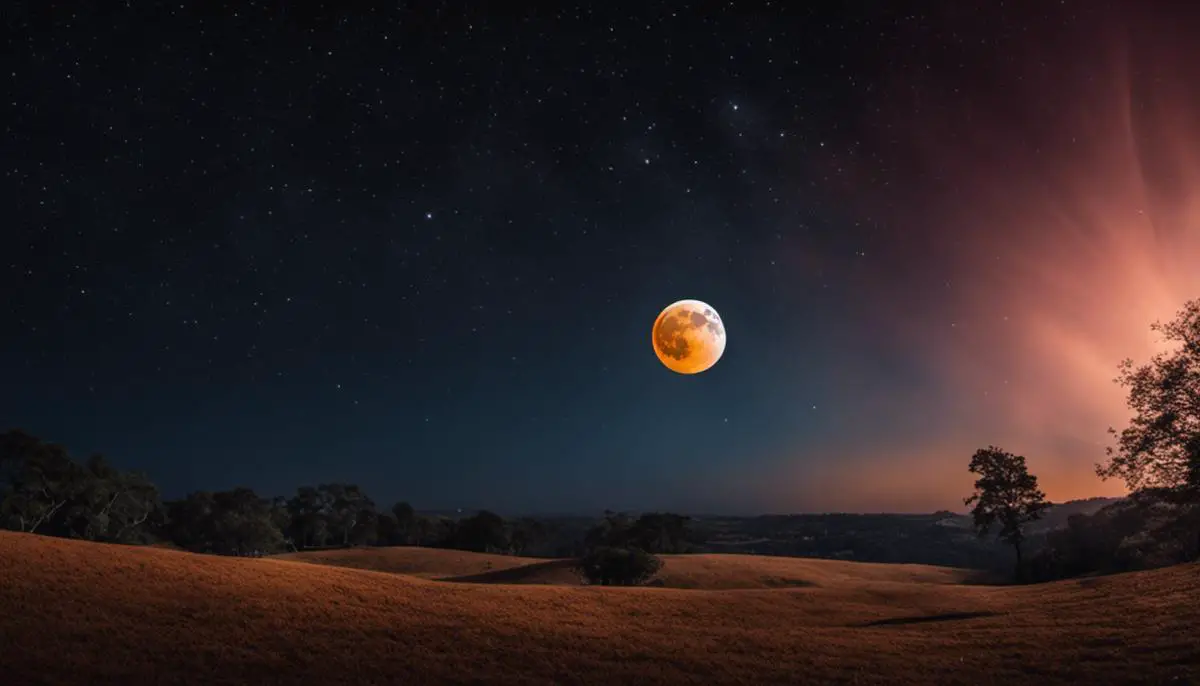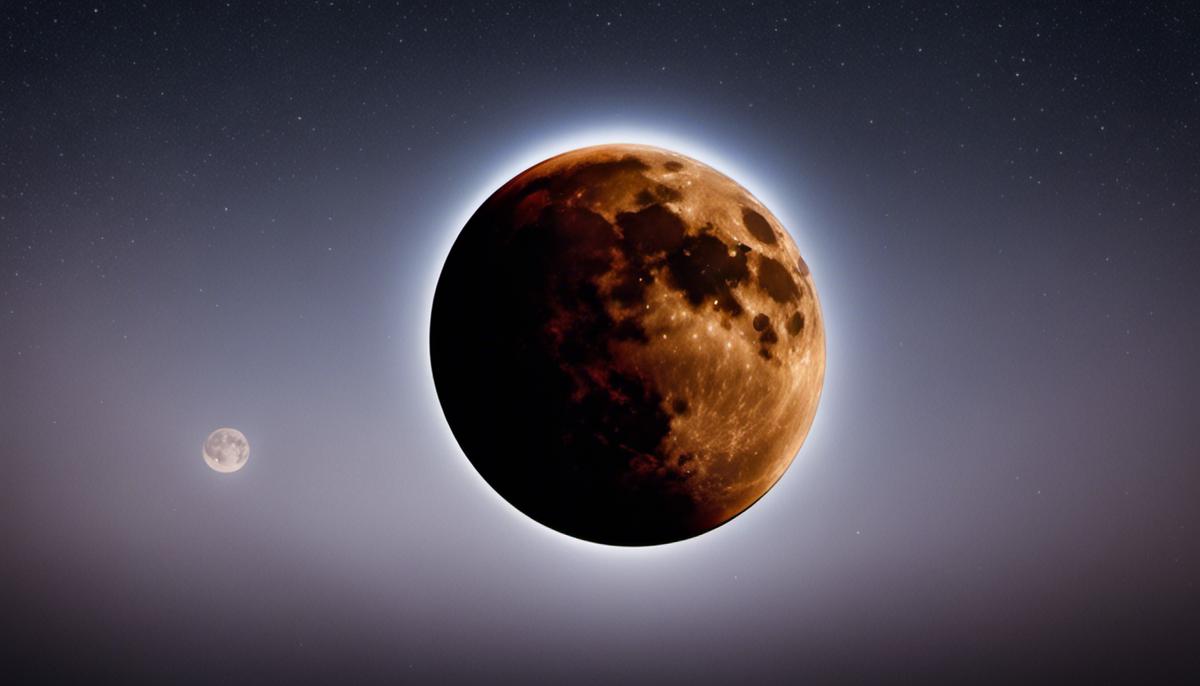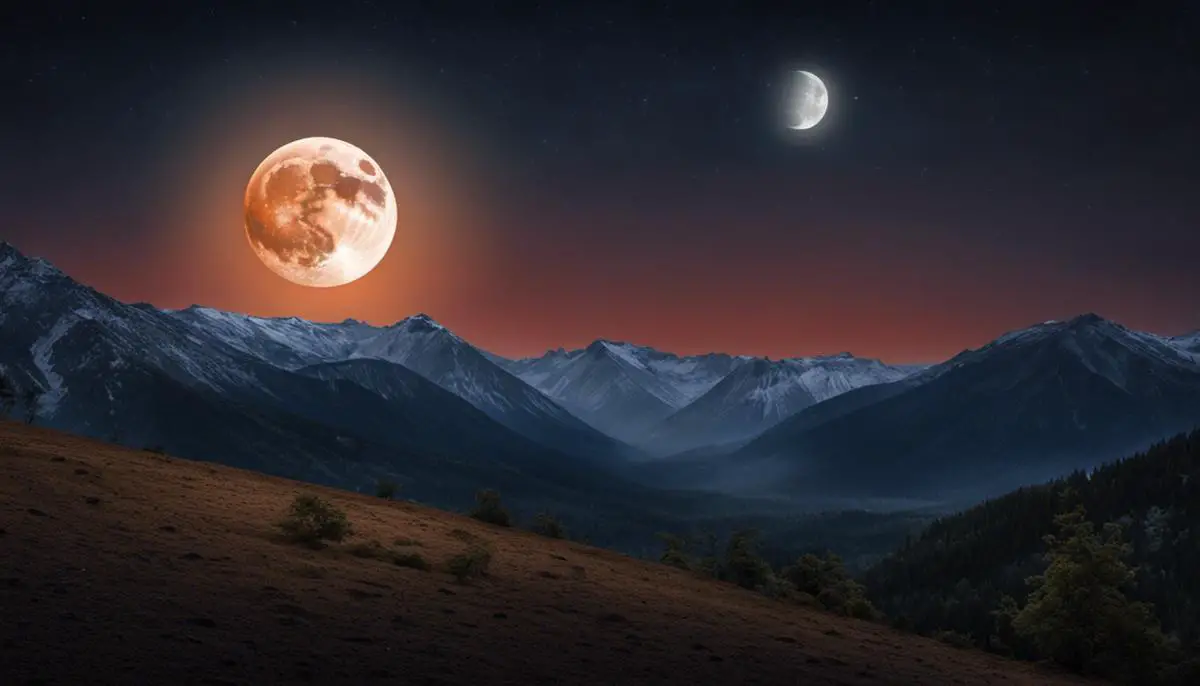The marvels of the cosmic universe never fail to fascinate and leave us in awe. Two such celestial occurrences that have intrigued astronomers and skygazers alike for centuries are the lunar eclipse and full moon. While at a glance they might appear similar, intricate cosmic choreography set against the infinite void converge to present these stunning spectacles, each carrying its distinct characteristics and charm. This essay seeks to clarify these stunning phenomena, their workings, and their contrasts. Furthermore, it also brings into focus the predicted lunar eclipse and full moon events of October 2023, guiding readers on when and how to witness these celestial marvels, alongside discussing their broader implications.
Understanding the Concepts: Lunar Eclipse and Full Moon
Understanding Lunar Eclipse and Full Moon
A lunar eclipse occurs when the Earth positions itself between the Moon and the Sun, causing the Earth’s shadow to be cast onto the Moon. This type of celestial event can only take place during a full moon phase when the moon, earth, and sun are in total alignment. Lunar eclipses happen in phases, beginning with the penumbral phase when the moon first enters the Earth’s outermost (penumbral) shadow, then the partial phase ensues as the moon enters the darker (umbral) shadow, and it ends at the total phase when the moon is fully within the Earth’s umbral shadow.
In contrast, a full moon is a regularly occurring instance in the lunar cycle when the entire visible surface of the moon is illuminated by the Sun’s light. This happens when the Earth is positioned between the Sun and the Moon, but unlike in a lunar eclipse, they are not perfectly aligned. The light from the Sun is able to stream past the Earth and illuminate the Moon.
Lunar Eclipse and Full Moon: Differences and Similarities
The stark difference between a lunar eclipse and a full moon lies in their occurrences. While a full moon occurs once every lunar cycle (approximately 29.5 days), a lunar eclipse does not happen as frequently because it requires a perfect alignment of the Earth, Moon, and the Sun which is a rather rare phenomenon. However, every lunar eclipse occurs during a full moon, but not every full moon features a lunar eclipse. This is attributed to the moon’s inclined orbit around earth which prevents a perfect alignment from happening each lunar cycle.
In terms of similarities, both lunar events involve a sort of a lineup of the Earth, Moon, and the Sun. They also share the feature of illuminating the whole lunar disc, creating a spectacle in the night sky. While a full moon is known for its bright, whitish glow, a lunar eclipse can present a range of colors on the moon, from a coppery hue to a deep red, depending on the Earth’s atmospheric conditions.
Upcoming Celestial Events: Full Moon and Lunar Eclipse in October 2023
October 2023 is marked to be an intriguing month for astronomy enthusiasts with the occurrence of both a full moon and a partial lunar eclipse. The full moon, known for its radiant beauty, is slated to grace the night sky on October 5, 2023. Following this, on October 19, observers will get a chance to witness a partial lunar eclipse. During the unfolding of this celestial event, it is expected that a subtle dark shading will cover the moon’s surface as it drifts through the outer penumbral shadow of the Earth. A segment of it further plunges into the deeper and darker umbral shadow, hence the term “partial” lunar eclipse. Visibility of these unique events is greatly influenced by clear weather conditions and can differ depending on the geographical locations.

Lunar Eclipse October 2023: Specifics and Viewing Guide
The Phenomenon of the October 2023 Lunar Eclipse
Lunar eclipses are born out of a unique alignment of celestial bodies – the Sun, the Earth, and the Moon. They occur when the Earth positions itself in a way that obstructs the Sun’s rays from reaching the Moon. Such a fascinating display of cosmic alignment is set to take place in the form of a partial lunar eclipse on October 28th, 2023, which will be observable from numerous locations around the globe including Asia, Australia, and parts of North and South America, as well as across the Pacific, Atlantic, and the Indian Ocean.
From the moment it begins to the time it concludes, this astronomical event will span approximately 6 hours and 44 minutes, with the actual event of partial eclipse lasting for an estimated 3 hours and 34 minutes.
Type of Lunar Eclipse and Its Frequency
The October 2023 event is considered a deep partial lunar eclipse. A total lunar eclipse, when the entire moon enters Earth’s shadow, is considered more visually significant than a partial, when only a segment of the moon appears shining in direct sunlight. However, even a partial lunar eclipse can be impressive to observe.
Eclipses, whether solar or lunar, do not happen every month due to the slight inclination of the Moon’s orbit. A lunar eclipse can only occur during a full moon. The Moon enters Earth’s shadow about two times each year and partial eclipses are more common than total.
Viewing Guide for the October 2023 Lunar Eclipse
Observers in the areas where the eclipse is visible don’t require any special equipment to safely view a lunar eclipse, unlike when observing solar eclipses. The lunar eclipse can be viewed with the naked eye, although binoculars or a telescope may enhance the experience, allowing close-up views of the moon’s surface as it changes color.
To best experience this celestial event, find a location with a clear, unobstructed view of the night sky, far away from city lights which can diminish the spectacle. Check weather forecasts in advance to ensure clear skies are predicted for the night of the eclipse.
Observers should look eastwards to see the Moon emerging from the Earth’s shadow. The optimum viewing time will depend on the viewer’s location, but the peak of the eclipse, when the Moon will be closest to the center of the Earth’s shadow, will offer the most spectacular view.
Observing a lunar eclipse is not only captivating but also educative. It presents a unique opportunity to gain insights into the mechanics of our solar system. Beyond the spectacle it presents, it serves as a practical representation of the consistent rotation of celestial bodies within their orbits.

Full Moon October 2023: Predictions and Significance
Forecasted Lunar Phenomena in October 2023
October 5th, 2023, is the anticipated date for that month’s Full Moon, traditionally known as the Hunter’s Moon. It is the successor to the Harvest Moon, which usually graces our skies in September. The term “Hunter’s Moon” originates from farming communities and symbolizes the time to begin hunting in readiness for the winter.
Lunar Eclipse vs Full Moon
The October 2023 Full Moon will not be like any regular Full Moon. The Full Moon in October 2023 would also coincide with a Penumbral Lunar Eclipse. This is when the Earth comes between the Sun and the Moon, but only the outer shadow (penumbra) of Earth falls on the Moon, making it appear slightly darker than usual. An eclipse cannot occur without a full moon, but a full moon can occur without an eclipse. For a lunar eclipse to happen, the Sun, Earth, and Moon must be nearly aligned for Earth’s shadow to cover the moon. Unlike a full moon, which can be observed from anywhere on the night side of Earth, a lunar eclipse can only be seen from the regions where it’s night at the time of the eclipse.
Global Visibility & Time
The timing of this penumbral lunar eclipse in October 2023 is expected to favor the Eastern Hemisphere, especially Asia, Australia, and the Pacific. For people living in these regions, the eclipse is predicted to take place in the early morning hours before sunrise – October 6th. Exact times vary depending on your location.
Astrological Significance
This particular Full Moon will be in the sign of Aries, according to astrology. Aries, a sign known for its impulsive nature and willingness to initiate action, aligns with the Hunter’s Moon’s symbolism of beginning the hunt for necessities before winter.
Cultural & Scientific Impact
The October Full Moon has several cultural references. For instance, it is known as the Hunter’s Moon in many Western cultures. This serves as a reminder of the preparations that need to be done for the upcoming winter. Native American tribes often associated this time with the hunting and storing of game.
Scientifically, a lunar eclipse provides some of the most spectacular views of the Moon, offering scientists and astronomers an opportunity to observe and study the lunar surface under different light conditions. This contributes to ongoing lunar research and the understanding of our Solar System.
Unique Features
Each Full Moon has its individual character and October’s is no different. One interesting point about the October 2023 Full Moon is that because it falls within the penumbral shadow of the Earth during the eclipse, it may not appear as bright as full moons typically do. Observers can expect to see a dark shading on the Moon’s surface, giving it a slightly eerie appearance which can make for unique viewing and photographic opportunities.

Appreciation and knowledge of celestial occurrences like a lunar eclipse or full moon not only equip us with scientific understanding but also connect us more deeply with our shared humanity that has been exploring these cosmic mysteries for millennia. The upcoming lunar eclipse and full moon in October 2023 offer an exciting opportunity to immerse ourselves in this exploration, reflecting cultural, astrological, and scientific significance. Whether you are an avid skygazer or a curious onlooker, these celestial events beckon us all to gaze up at the night sky and marvel at the universe’s grandeur. All you need is the right information, a bit of preparation, and a skywards glance to embark on this fascinating journey.
![]()
